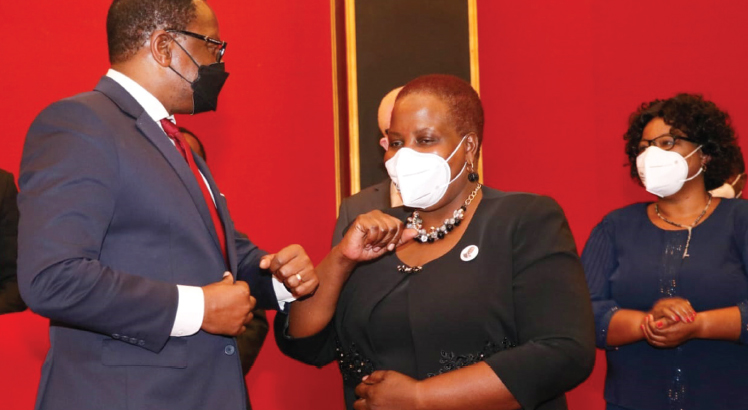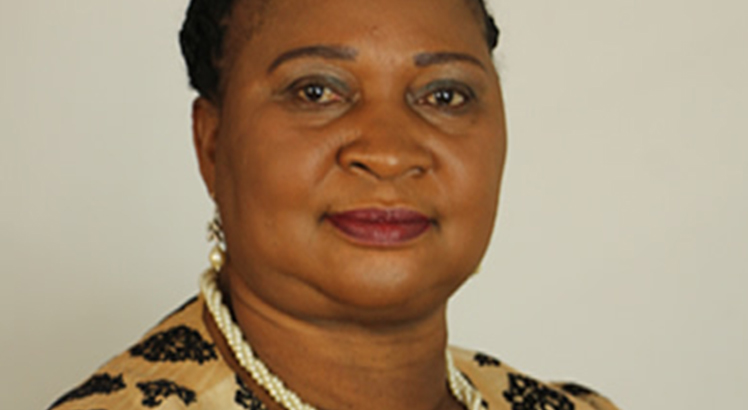Malawi prevents 4600 covid deaths
The Presidential Task Force on Covid-19 says a combination of vaccines and other interventions have helped to avert at least 4 600 potential Covid-19-related deaths.
Speaking yesterday when the task force presented a comprehensive report to President Lazarus Chakwera at Kamuzu Palace in Lilongwe, task force co-chairperson Wilfred Chalamira-Nkhoma said the results were cumulative effects of all measures applied since the pandemic response started.
He said the number of averted deaths is based on the epidemiologic principle of the reproductive ratio of 1:4 and 1:2 on the health impact.
Chalamira-Nkhoma said at least 124 000 new Covid-19 cases were also averted.

In this regard, he appealed to the public to utilise the available vaccines to prevent infection and deaths from Covid-19.
Said Chalamira-Nkhoma: “To increase coverage with vaccines, we need to ensure that vaccines are available and people have been sensitised to patronise the vaccines. Delivery systems to include facility-based as well as campaign modes such as door-to-door approaches.”
The task force co-chairperson called for initiatives to ensure universal coverage of all high risk and vulnerable populations such as health care workers, social workers, and general civil servants who serve communities often.
In a telephone interview yesterday, Malawi-Liverpool Wellcome Trust researcher Dr. Kondwani Jambo observed that the Omicron variant was mild and technically, the country is out of the Covid-19 pandemic woods.
He said: “Omicron is on the way out. It is not as bad as it was and we can say that, technically, Malawi is out of the woods.”
Jambo was quick to add that although Covid-19 vaccination is a powerful intervention the country has not vaccinated enough people to see the full impact of the campaign.
He said: “My team and I are currently doing a study in Blantyre for people with hypertension, diabetes and HIV to see how much Covid-19 vaccination protects against severe disease, hospitalisation and death in the Malawi context. Data will be ready in 2023.”
On his part, Society of Medical Doctors (SMD) president Dr. Victor Mithi agreed with Jambo that the threat is no longer big, but said there is need to stay alert for other variants that may come.
He said: “There is need to intensify vaccination especially for the vulnerable groups. Covid-19 [vaccine] works and it reduces severity and we need to avert more deaths and reduce the spread.”
In his remarks after receiving the report, Chakwera commended the task force for giving their best to deliver on people’s expectations, adding there is need to build capacity so that the country is not caught unawares in future.
Among others, the report indicates that there were 85 339 confirmed Covid-19 cases as of February 28 2022 and that the second and fourth waves had more cases, with the fourth wave of Omicron dropping faster than the others.
The report further shows that there was a national overall average recovery rate of 90 percent with Likoma District recording the highest recovery rate at 98.3 percent while Lilongwe recorded the lowest at 70.9 percent.
In terms of deaths ratio, Chiradzulu District was the hardest hit at 9.0 percent followed by Chitipa at 8.9 percent while Mulanje was the lowest at five percent, according to the report.
The report says K28.4 billion was released by government during the period to fight the pandemic and included K5 billion which was made available in March 2020 during first wave, K6.2 billion which was for operating clusters, among others, and K17.2 billion released during the third wave.
Commenting on the utilisation of the funds, Chalamira-Nkhoma said: “No less than these amounts were released specifically for the response, but there were other expenses outside these particular blocks of funds, including at ministry and department levels.”
On her part, Minister of Health Khumbize Chiponda, who also co-chairs the task force, said the K6.2 billion was audited and its report released while an audit into how K17.2 billion was utilised is underway.
The minister added that the task force also reduced the number of clusters from 15 to 10 as a way of ensuring that funds were utilised efficiently and effectively.
The clusters that were removed include camp and shelter, public communication and engagement, water and sanitation hygien.
Meanwhile, Chakwera has endorsed the report and authorised its publication.






One Comment